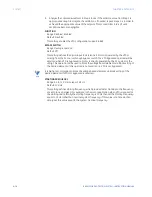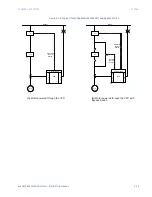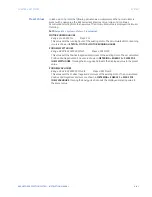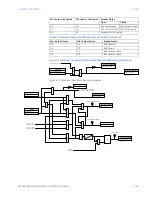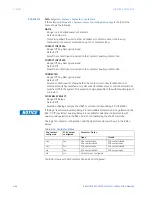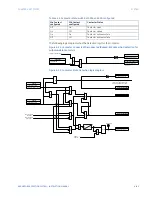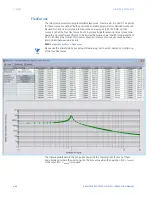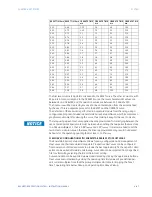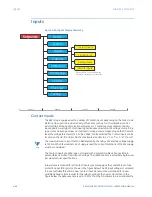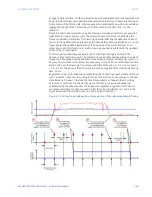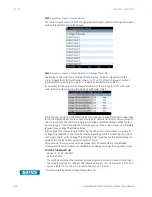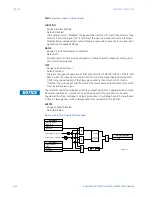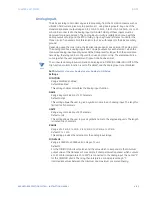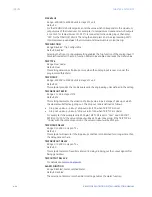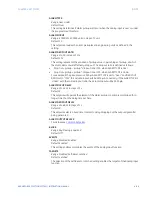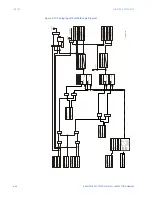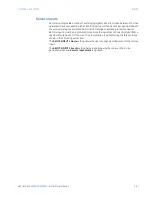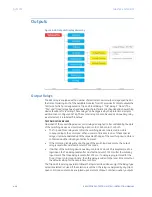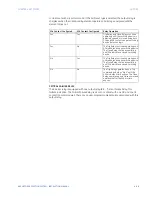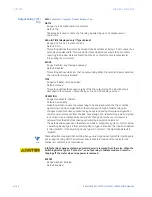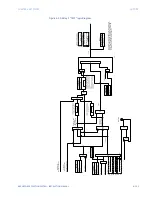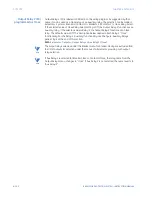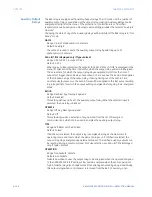
CHAPTER 4: SETPOINTS
INPUTS
869 MOTOR PROTECTION SYSTEM – INSTRUCTION MANUAL
4–89
change of state (mark no. 2 in the diagram). Once validated (debounced), the new state will
be declared and a FlexLogic operand will be asserted at the time of a new protection pass.
A time stamp of the first sample in the sequence that validates the new state is used when
logging the change of the Contact Input into the Event Recorder (mark no. 1 in the
diagram).
Protection and control elements, as well as FlexLogic equations and timers, are executed
eight times in a power system cycle. The protection pass duration is controlled by the
frequency tracking mechanism. The FlexLogic operand reflecting the debounced state of
the contact is updated at the protection pass following the debounce (marked no. 2 on the
figure below). The update is performed at the beginning of the protection pass so all
protection and control functions, as well as FlexLogic equations, are fed with the updated
states of the Contact Inputs.
The FlexLogic operand response time to the Contact Input change is related to the
debounce time setting plus up to one protection pass (variable and depending on system
frequency if frequency tracking enabled). For example, 8 protection passes per cycle on a
60 Hz system correspond to a protection pass every 2.1 ms. With a contact debounce time
setting of 3.0 ms, the FlexLogic™ operand-assert time limits are: 4.2 + 0.0 = 4.2 ms and 4.2
+ 2.1 = 6.3 ms. The 4.2 ms is the minimum protection pass period that contains a debounce
time, 3.0 ms.
Regardless of the contact debounce time setting, the Contact Input event is time-stamped
with 1 protection pass accuracy using the time of the first scan corresponding to the new
state (mark no. 1 below). Therefore, the time stamp reflects a change in the DC voltage
across the Contact Input terminals that was not accidental as it was subsequently
validated using the debounce timer. The debounce algorithm is symmetrical: the same
procedure and debounce time are used to filter the LOW-HIGH (marks no.1 and 2 in the
figure below) and HIGH-LOW (marks no. 3 and 4 below) transitions.
Figure 4-25: Contact Input Debouncing Mechanism and Time-stamping Sample Timing
Summary of Contents for 869
Page 10: ...VIII 869 MOTOR PROTECTION SYSTEM INSTRUCTION MANUAL ...
Page 127: ...CHAPTER 3 INTERFACES SOFTWARE INTERFACE 869 MOTOR PROTECTION SYSTEM INSTRUCTION MANUAL 3 49 ...
Page 129: ...CHAPTER 3 INTERFACES SOFTWARE INTERFACE 869 MOTOR PROTECTION SYSTEM INSTRUCTION MANUAL 3 51 ...
Page 538: ...4 406 869 MOTOR PROTECTION SYSTEM INSTRUCTION MANUAL TESTING CHAPTER 4 SETPOINTS ...
Page 578: ...6 22 869 MOTOR PROTECTION SYSTEM INSTRUCTION MANUAL FLEXELEMENTS CHAPTER 6 METERING ...
Page 592: ...7 14 869 MOTOR PROTECTION SYSTEM INSTRUCTION MANUAL CLEAR RECORDS CHAPTER 7 RECORDS ...




